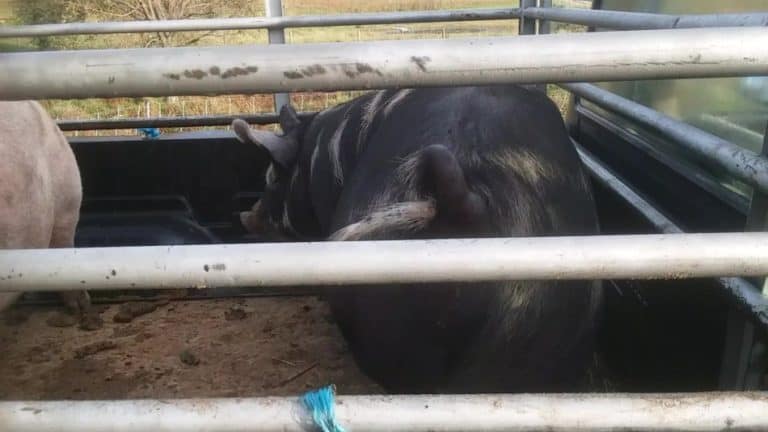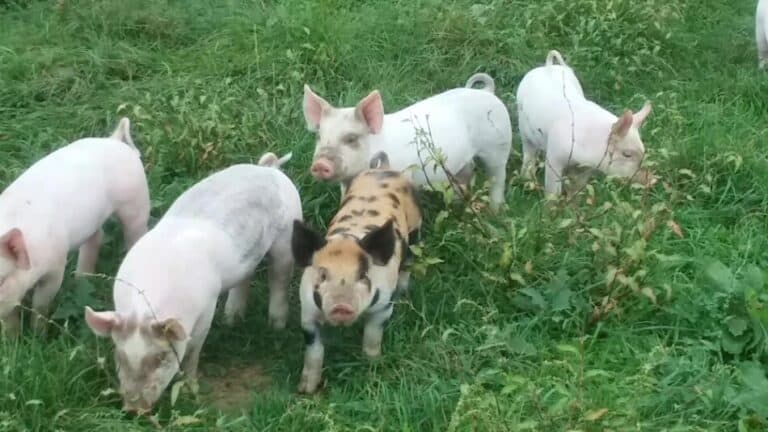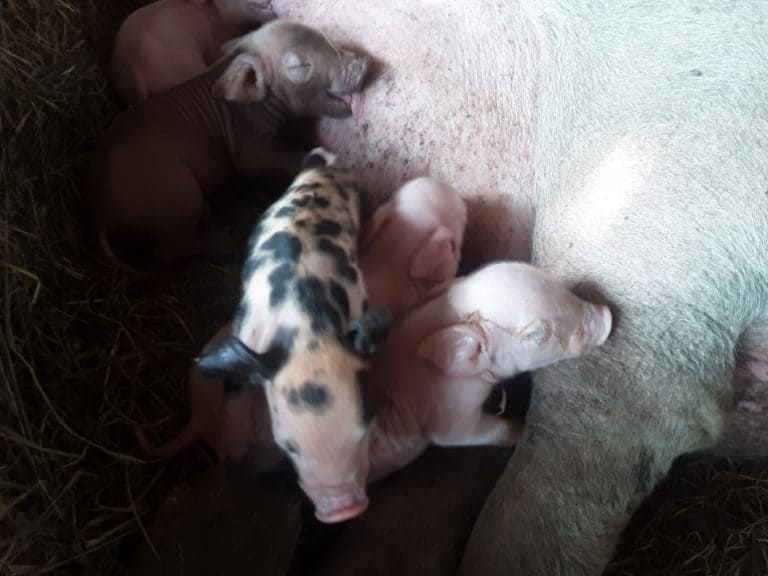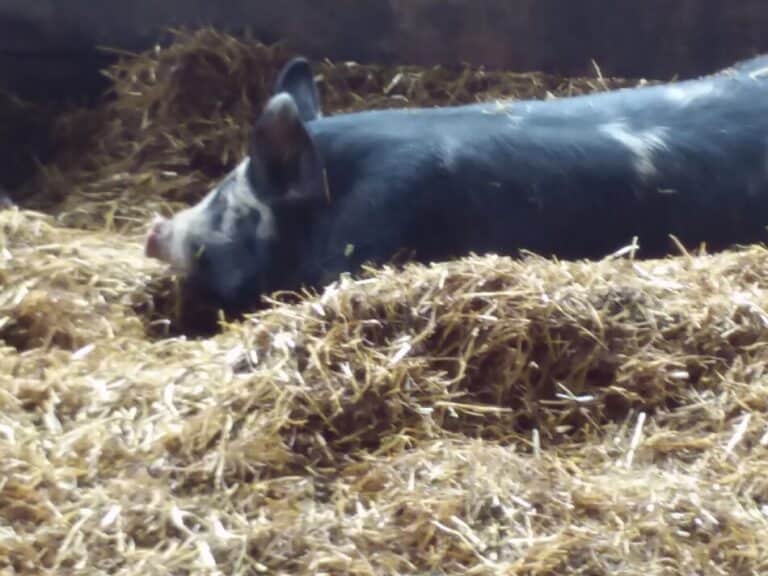Pigs And Salt: Do They Really Need It?
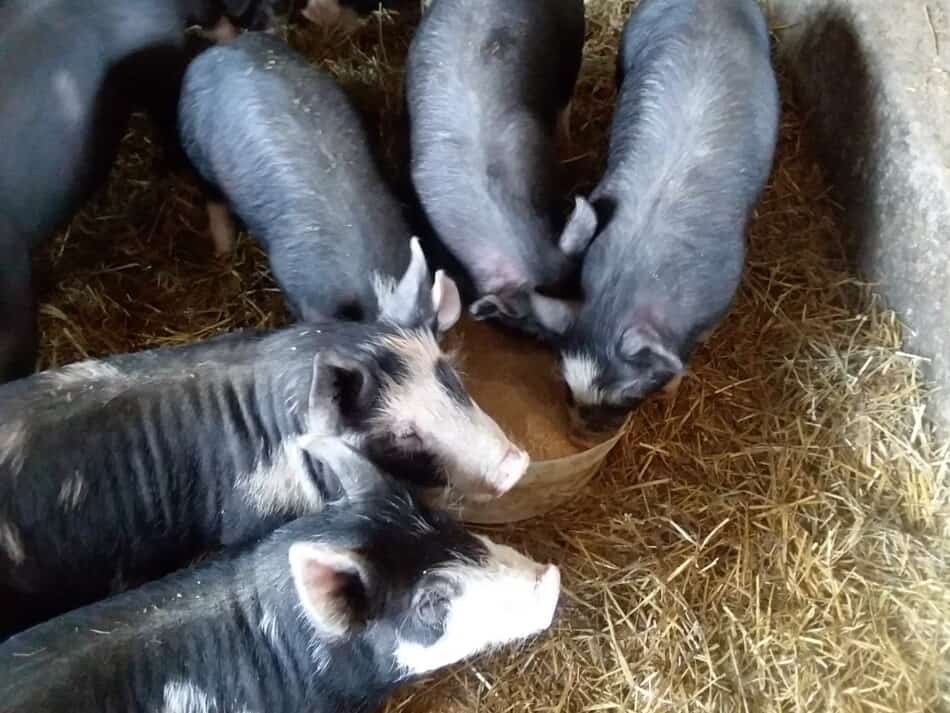
You don’t hear much about salt, when you are looking into what to feed your pigs. Do pigs even need salt, and, if so, how do you know the amount of salt to give them?
Pigs need salt in their diet. Growing pigs need their daily salt intake to be .25% of their ration, while pigs used as breeding stock need .5% of their daily ration to be salt.
The Best Feed For Raising Feeder Pigs will walk you through figuring out the best ration to keep your pigs happy and quickly get them to finishing weight.
Pigs need salt in their diet
All animals, including your pigs, need salt in their diet, but not too much. This is one of those Goldilocks moments, not too much, not too little, we are looking for “just right”.
The main source of salt in your pig’s daily ration will come from the pig feed you provide. If you look at the label, the ingredients will be listed out. Sodium anything is what you are looking for.
Usually, on the feed label you will see a percent salt minimum and a percent salt maximum listed. This will be in the same section that lists out percent protein, which is normally first, whereas salt tends to be listed last.
If you make your own feed, be sure to use a mineral supplement, this is where the salt (and other minerals and vitamins) in your pig’s diet will come from.
Pig feed rations is a list of possible feed rations for your pigs, depending upon their age and stage of reproduction.
Pigs can get salt from their environment
Pigs can get salt from their environment, through natural salts in the dirt or from drinking saline water, which could be the only water available for livestock in certain locations, usually coastal areas.
Saline water sources will put too much total salt in your pig’s diet. If you live in an area that has saline water as the normal livestock water source, you must adjust the feed formulation for your pigs!
Pigs, just like us, drink extra water after eating salty foods, so our body wash out the extra salt. The catch is that if you are in an area with saline water, drinking extra water is adding extra salt! The opposite of what your pigs need.
Get help to have your feed adjusted to accommodate your water source. Look to an animal nutritionist or veterinarian to help you get the salt in your pigs’ diet at the right level.
If you want to read more about saline water and pigs, read How much salt should you add in your pig’s diet?, it has a whole section on the challenges dealing with raising pigs in areas with saline water sources.
Pig feeds low in salt restrict growth of the pigs
Pig feeds that are too low in salt will restrict the growth rate of your pigs. This will cost you in time and money, not to mention the compromised health of your pigs!
Let’s be upfront about it, salt is pretty cheap. Skipping or neglecting salt in your pig’s ration is a poor choice.
In most parts of the world salt is available and low cost, but time lost due to nutritional mismanagement always has a high cost.
The highest cost of raising an animal is always feed, slowing down growth by having inappropriate feed for your pigs is making your feed bill go up!
Slow growing pigs will need more feed for maintenance requirements than fast growing pigs, a gap that will only get more noticeable as they get bigger!
5 Tips To Help Your Pigs Grow gives you the scoop on a variety of steps you can take to make sure your pigs are growing their best.
If you have never thought about it before, consider this: growth or gains only happen when the daily living requirements, called maintenance needs, are met.
The faster your pigs grow the less total feed you are feeding for maintenance and the more of your total feed is going to growth.
A mild deficiency of sodium and chloride is evident in the form of loss of productivity in all classes of animals.
FeedStrategy.com How Much Salt Should You Add In Your Animal Feeds? by Ioannis Mavromichalis
Give your pigs a complete feed to ensure appropriate salt intake
So, how do you make sure that your growing pigs are getting enough salt, everyday? Easy, give them a complete feed with the appropriate amount of salt (and other minerals) already included.
If you are still not confident that your pigs are getting enough salt and other minerals, give them a salt block and a mineral block and see if they spend time licking either one.
The purpose of the blocks is to make additional salt and minerals available on demand to your pigs. Your job is to provide what they need, they’ll eat it if they need it.
If they ignore it or play with the blocks, you’ll know they don’t really need additional minerals and salt in their diet.
Adult pigs need .5% salt in their ration
Adult pigs, breeding stock, need to have .5% salt in their ration. Once again, this should be handled by the pig feed that you are giving them.
Recent research suggests that for breeding stock, .5 percent added salt is adequate.
Swine Nutrition Guide–Minerals, NCS Swine Extension
However, since adult pigs on a maintenance ration can get up to 50% of their diet from pasture or other forages, this can present a challenge to get all the minerals they need while eating that much of a low salt feed source.
Pigs on pasture would be great candidates for salt and or mineral blocks. This way they can choose what salt and minerals to consume and will balance their diets on their own.
Nice, since as pasture conditions change and the sow’s reproductive stage changes she will be able to adjust her salt and mineral intake to suit her needs.
Growing pigs need .25% salt in their ration
Growing pigs, like feeder pigs, need to have .25% salt in their daily ration. Normally, this amount of salt is already in the feed, since you would be buying premixed pig feed.
If you are making your own pig feed, be sure you are including the right amounts of salt, since the rest of the diet that your pigs could be getting, pasture, vegetables, etc., are all low salt feed stuffs.
Grains and plant protein supplements are low in sodium and chloride, but the needs of the growing-finishing pig can be met by adding .25 percent salt to the diet.
Swine Nutrition Guide–Minerals, NCS Swine Extension
Since growing pigs are only able to perform at their genetic best when they are managed appropriately, having their feed correctly formulated will directly affect your results, as evidenced by the pig’s growth rate.
Resources:
Swine Nutrition Guide–Minerals, North Carolina State Swine Extension, I used the section on salt for the stats above
FeedStrategy.com, How much salt should you add in your animal feeds? by Ioannis Mavromichalis, I used the sections on low salt restricting growth and saline water
